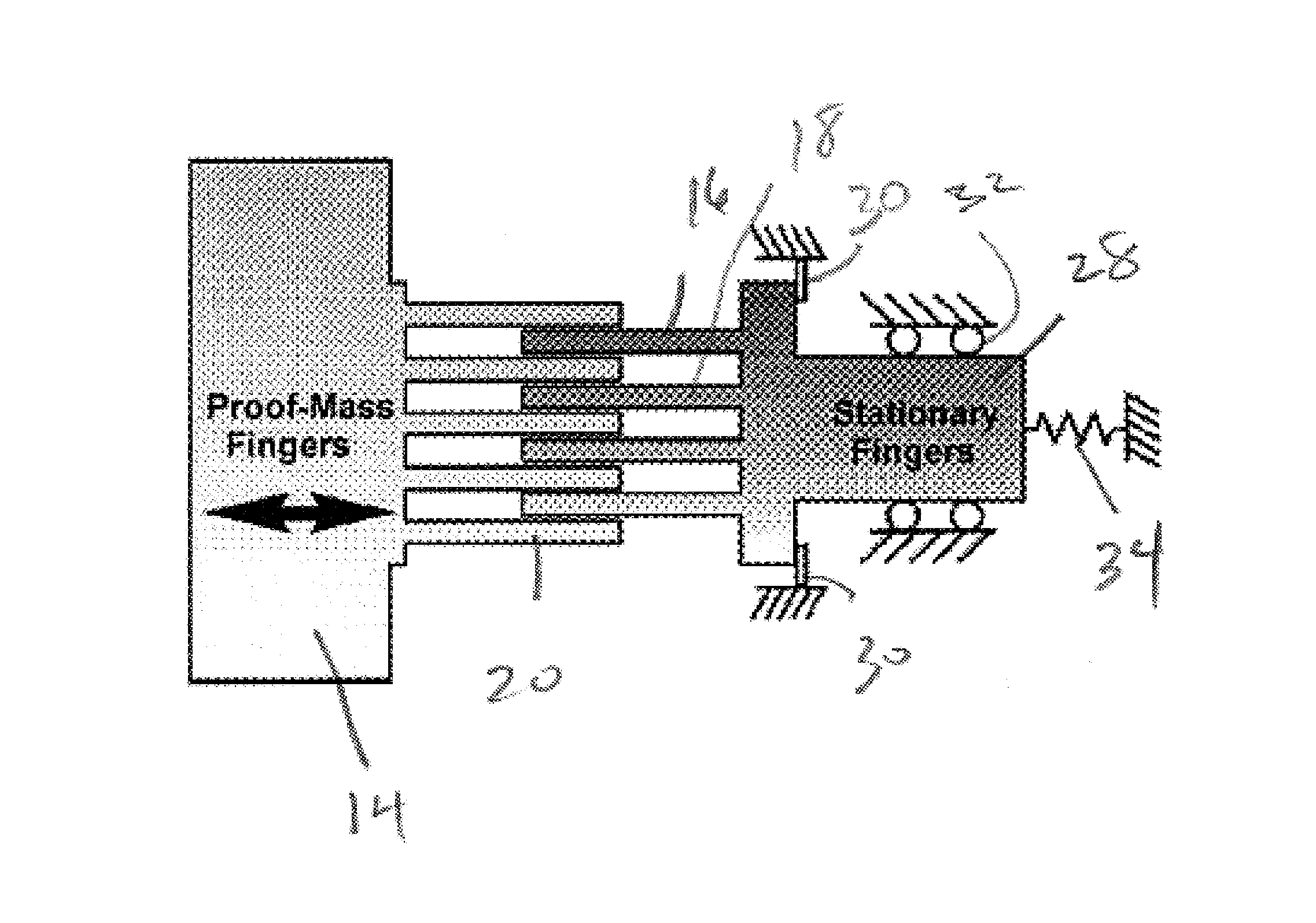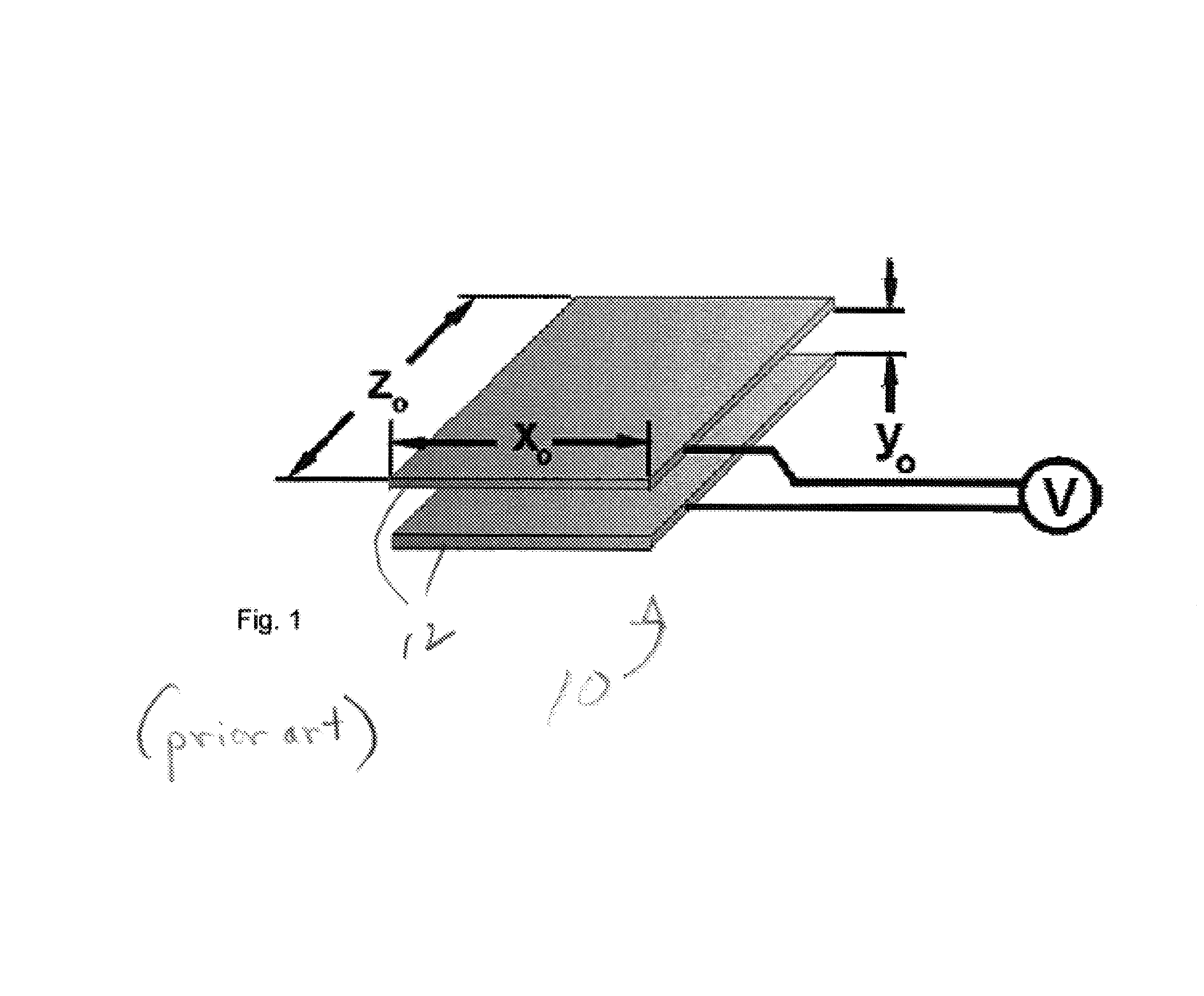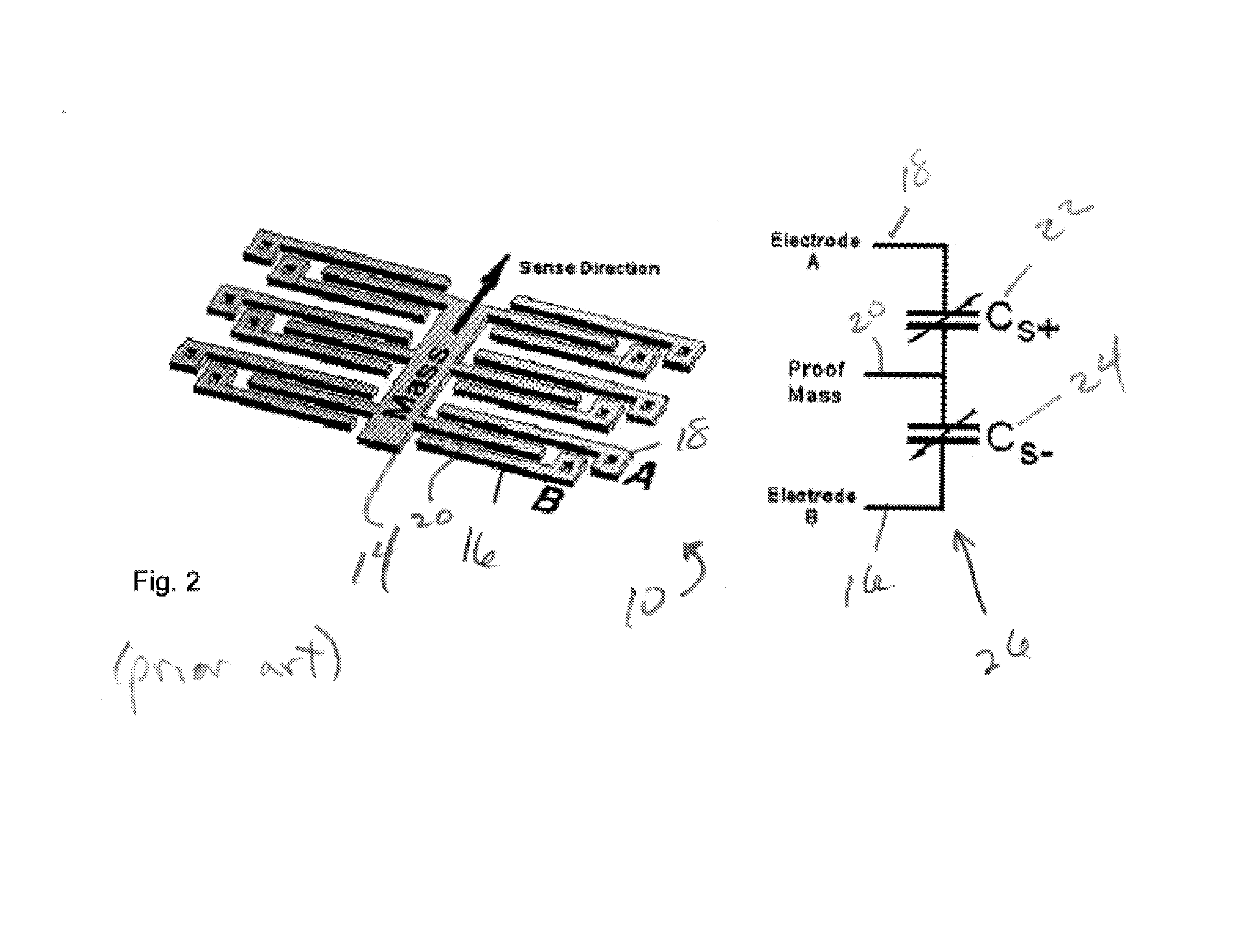Post-release capacitance enhancement in micromachined devices and a method of performing the same
a micromachined device and capacitance enhancement technology, applied in the direction of acceleration measurement using interia forces, generators/motors, instruments, etc., can solve the problems of large drive signal feed-through, limited sensing and actuation capacitance of micromachined devices, and additional fabrication steps, so as to achieve enhanced capacitive function and high stiffness
- Summary
- Abstract
- Description
- Claims
- Application Information
AI Technical Summary
Benefits of technology
Problems solved by technology
Method used
Image
Examples
Embodiment Construction
[0031]Consider first some basics of electrostatic actuation and detection by way of general background. The electrostatic actuation and sensing components of micromachined devices can be modeled as a combination of parallel-plate capacitors 10 as shown in diagrammatic perspective view in FIG. 1. In the most general case, the capacitance between two parallel plates can be expressed as
[0032]C=ɛ0Aoverlapy0=ɛ0x0z0y0.(1)
[0033]where ε0=8.854×1012 F / m is the dielectric constant, x0×z0=Aoverlap is the total overlap area, y0 is the electrode gap.
[0034]In parallel-plate electrodes, the electrostatic force is generated due to the electrostatic conservative force field between the plates 12. Thus, the force can be expressed as the gradient of the potential energy U stored on the capacitor
[0035]F→=-∇U=∇C(x,y,z)V22=ɛ0∇(xnzny0)V22(2)
[0036]In the case of comb-drives, the actuation force is generated through a combination of parallel plates sliding parallel to each other which in the illustr...
PUM
 Login to View More
Login to View More Abstract
Description
Claims
Application Information
 Login to View More
Login to View More - R&D
- Intellectual Property
- Life Sciences
- Materials
- Tech Scout
- Unparalleled Data Quality
- Higher Quality Content
- 60% Fewer Hallucinations
Browse by: Latest US Patents, China's latest patents, Technical Efficacy Thesaurus, Application Domain, Technology Topic, Popular Technical Reports.
© 2025 PatSnap. All rights reserved.Legal|Privacy policy|Modern Slavery Act Transparency Statement|Sitemap|About US| Contact US: help@patsnap.com



